
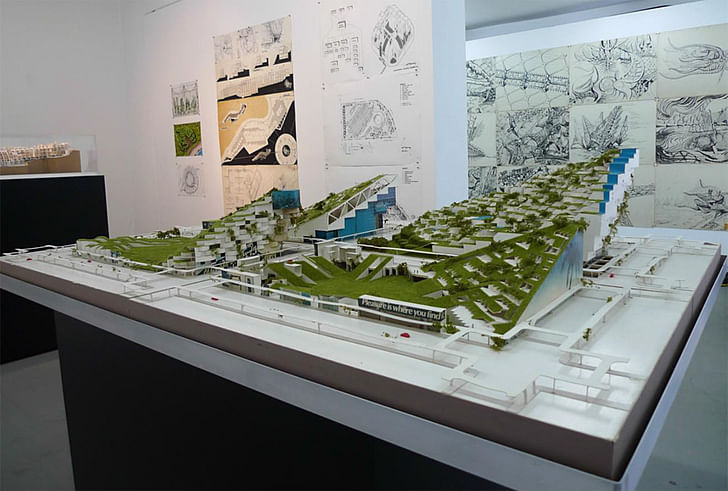
It is always good to see old friends, past mentors and new students at an exhibit honoring someone you love and admire. The work of Glen Small, the 'hesitant' father of Green Architecture is on display until the end of November.
The organizer and curator of the exhibit, Assembly and Archinect's own Orhan Ayyüce, has put together a smart, focused, visual overview that also includes several lectures, workshops, a book and a screening of the documentary film MY FATHER THE GENIUS.
BTW, I say hesitant Father of Green Architecture because Small thinks it should be Malcolm Wells, the author of Gentle Architecture. I disagree and I'll argue the case for Glen Small another time.
Glen and I went round and round trying to figure that one out. It is an amalgam of predecessors. I suggested Frei Otto, both as design influence and green prototypes, i.e. his ILM (Institute for Lightweight Structures). Lightweight Tensiles yes but not all green, mostly known for the engineering. I mentioned Ralph Knowles. Glen said he was not at all into green, mostly academic solar studies, although his book titles suggest something else. Bucky Fuller, not green all tech. Ian McHarg’s DESIGN WITH NATURE is a planning, not design book. Soleri was reinventing Rome, cast concrete substituting for stone. FLW? Do you want to go back to pre 20thC? Then let’s look at Architecture Without Architects a wonderful photo-book on indigenous architecture around the world. Everyone else is recent.
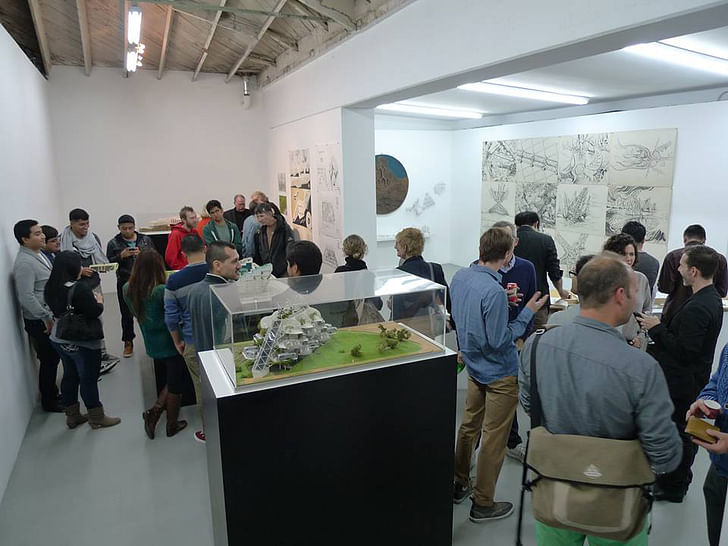
I look at Glen as the Big Daddy, The Father of Green Architecture. The works resonate like manifestos.Glen has the scope, the variations of forms and uses, the sheer output and again size. These are not Malcolm Wells bird-houses or gentle or underground works, This is in your face green. That’s why I look at Glen as the Big Daddy, The Father of Green Architecture. The works resonate like manifestos.
The exhibit at Assembly consists of several presentation models and lots of renderings, which are more like illustrations or painting. The imaginative renderings are what sets Small apart. They are all done by him, they are inventive not fantasy, and illustrates his proposals in a matter-of-fact scientific way. When asked who are his inspirations, almost none are architects. They are mostly engineers, scientists and philosophers. His latest renderings are proposals for a prototype Eco-Village in Nicaragua, and the Troposphere, a suspended tensile framework to green cities.
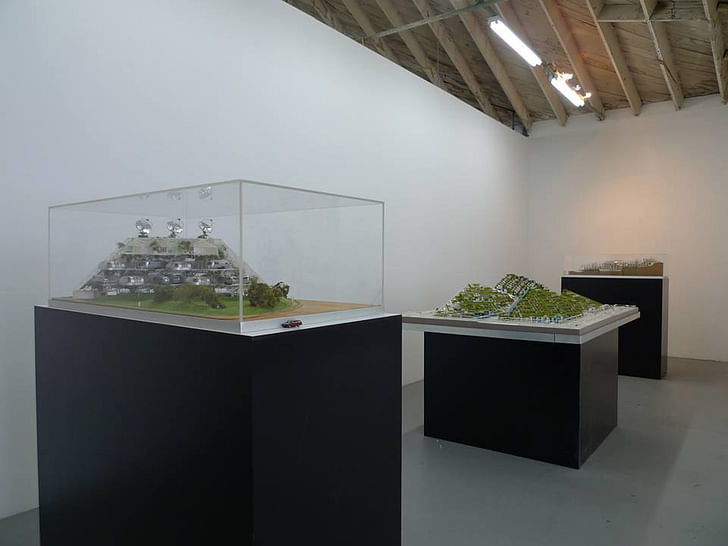
Green Machine, Hong Kong and Turf Town
The detailed models are the main attraction, set on pedestals a bit below eye-level. Again each built by Small, they present and articulate the worked out concepts. But not without flaws or fundamental arguments against them. As a critic I can point these out. As a friend it's my duty.

The Green Machine. The model is very attractive, the architecture fully engineered.. This mini-utopia archigram-like vertical housing framework is part prefab modular housing, part Airstream trailers, all set within a green space-framework.

This was almost built in the early 80s, and cost comparable to typical housing. But as urban planner /writer Dolores Hayden observed ”but it is still just a .. trailer park, isn't it." Yes the experimental high-tech Green Machine is fundamentally a luxury trailer park.
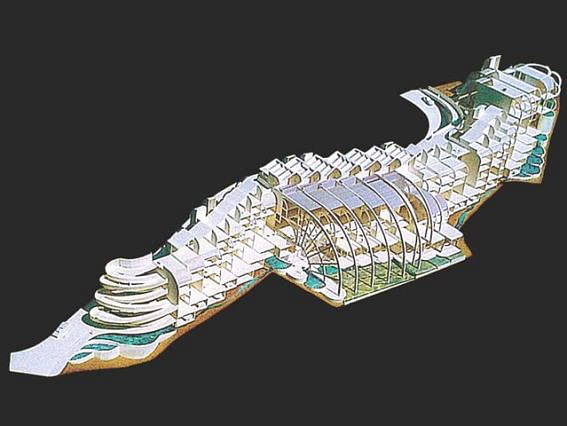
Hong Kong. Small's entry for the 80s The Peak competition is the best looking of the models. This was the competition that put Zaha Hadid on the map. Small's entry was best in LA. The off white model is nicely articulated, the repeating pre-fab modular units create an overall rhythmic shape that combines into a zoomorphic dragon. The solariums are the only green aspect seen. The modular units are re-worked cargo containers, referring to Hong Kong as a leader in that. Which to me is the conceptual flaw. It is a beautiful design but the literal use of containers is stretching that metaphor way too much.

The third model is Turf Town. This is a four-block green housing realignment that derives the overall form from solar angles. The north-facing modular units are orientated to always have sunlight, but not direct, and always green, with rooftop turf, hence the name. In theory this is Ralph Knowles solar section studies of the pueblo villages of Mesa Verde and Chaco Canyon but in reverse. The high south facing elevation opens up to shade protected under ground malls. This aspect is not developed and looks like just left-over space.
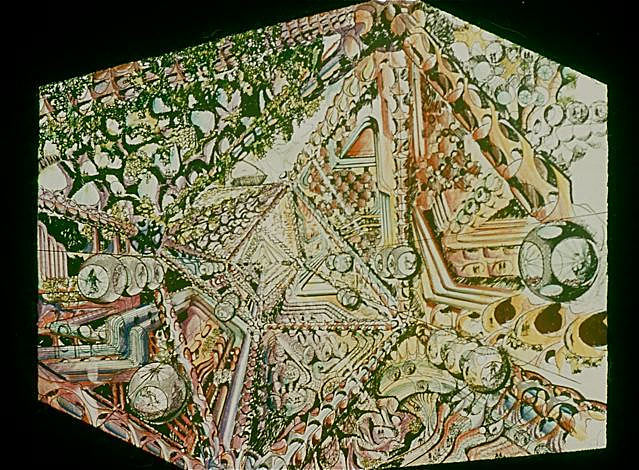
Small's biggest proposal and the concept that he is best known for is his Biomorphic Biosphere. Reyner Banham described it as the ultimate Megastructure. You would almost need the world to be destroyed to see this one built but one can imagine some post-apocalyptic race building this. Like the blue people in the film Avatar. Maybe Homo biomorphos or Homo biospheros.
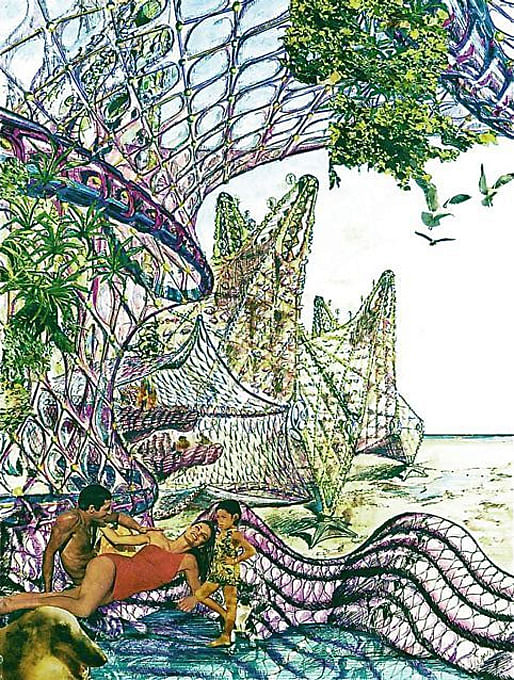
Nevertheless, the BB utopia is worked out to great detail as to structure and infrastructure in beautiful renderings. Everything is provided: food, water, sun and sex. Sex is the underlying theme. It is a Reichian universe populated with naked bodies among the swimming pools and fruit farms in this gigantic sex-topia. And with all this sex there will be lots of children, lots of them everywhere. I can only imagine the ultimate nightmare of a protein starved populace hunting down infants for meat. Oh the horror.
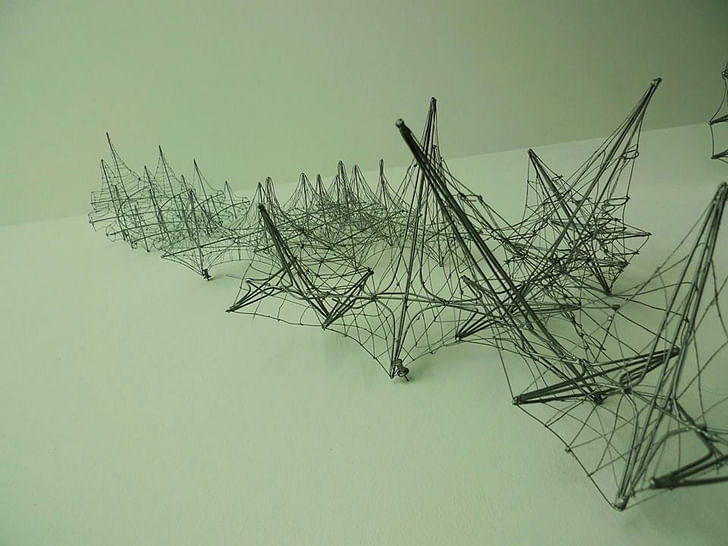
Despite the flaws the works of Glen Small offer so much that another architect could base an entire career on re-doing, modifying, repeating any one of his single works. It also begs the question as to why Glen Small isn't teaching, especially at SCI-Arc, the school he helped start.
The answer comes from my mother when I was a smart-ass, precocious kid. Mom, I asked, why don't people like me? It's because they're jealous, she said. ..because they're jealous of US.
Glen Small: Recovery Room
Los Angeles, CA - Assembly, 2045 S. La Cienega Blvd.
Saturday, November 09, 2013 - Saturday, November 30, 2013
Gallery Hours: Wednesday – Sunday between 12 to 6 pm
assemblyof.com
7 Comments
This review and Small's work seems to come from an ingroup/niche point of view.
For local (Los Angeles) fans of Archinect, there's a wonderful example of Small's work in the Franklin Hills. View my photos and description of the Leiberman House, designed byGlen Howard Small, AIA c.1989 and completed by Anthony Eckelberry in 1995.
http://www.flickr.com/photos/12549675@N05/7987365448/in/photolist-daPkto-daPm3N-daPozq-daPp45-daPoeQ-daPjva-daPnPA-daPnqd-daPmYd-cTKD2j-cTKzjq
Michael Locke, Editor http://www.theSilverLakeNews.com
Nice photos. You capture the 'spaceship landed here' quality that neighbors talk about.
GLEN SMALL RESPONSE TO REVIEW
eric chavkin,
enjoyed the review, but you dug deep to be critical which i take issue with.
the green machine was not just a trailer park. besides trailers there were modular houses and artist lofts. the interior walk streets were an extension of ones living room. the ground levels was a public park and garden. the emphasis was a closed loop eco system to be self sufficient and a shared living experience that allowed the low income occupants to own their our units that they could take with them when departing.
turf town, under the exterior was begging for explanation, but all doable and awaiting multiple functions: hotel, recreation center, market, commercial office spaces etc. what was shown was the volume with access to sun on boundary of the envelope. taking nothing away from ralph knowles, this was a simple solar zoning solution that did not cast shadows on adjoining property and gave the developer an envelope to build within. you are right that the interior volumes lacked explanation, but that would evolve with the developers needs,
hong kong was a modular building block using cargo container technology to manufacture. kurokawa did this with his business mans capsule housing in tokyo. but unlike kurokawa the hong kong peak scheme had multiple functions of varying sizes produced with appendages like high tech arches etc. plus the eco green emphasis of solar , food production fish ponds and public interaction on the roof path. the cargo containers allowed for a kit of parts constriction which was an important emphasis. the lighting system changing colors did not make the entry package, but was part of the design. if the visual wow computer generated images, had made the entry package, the entry might have received significant attention.
biomophic biosphere was stressing solutions for now that portrays the future. given the money, which any of our big hitters have from gates to the popular billionaire list, the biomorphic biosphere allows for an experiment that they could use as a theme park tourist attraction, that people could live in for awhile or forever. it is plausible, awaiting the big thinkers with the guts and bucks to pull it off.
glen howard small
Eric Chavkin passed away in his sleep, as noted by Orhan Ayyüce.
Thank you for posting this news beta.
Oh no, RIP!
Block this user
Are you sure you want to block this user and hide all related comments throughout the site?
Archinect
This is your first comment on Archinect. Your comment will be visible once approved.